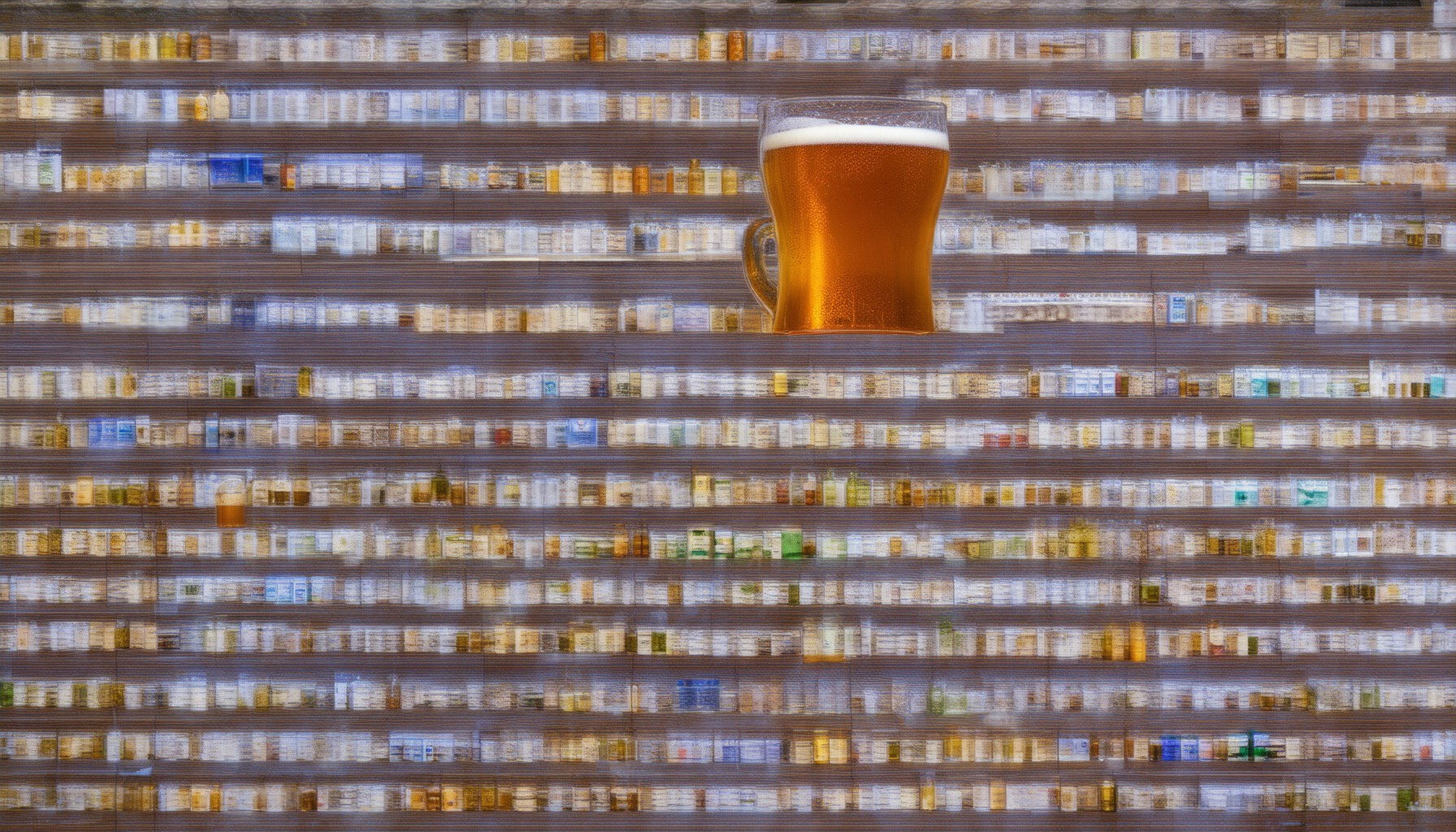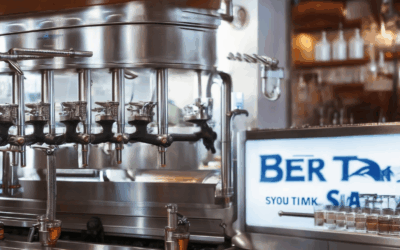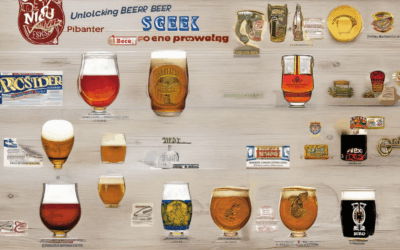The profitability of beer has long been a fascinating topic, with breweries worldwide striving to maximize their revenue while staying competitive in a dynamic market. From cultural icon to economic powerhouse, the beer industry plays a significant role in shaping economies and consumer behavior. This article delves into the intricate details of brewery revenue, exploring market trends, consumer behaviors, and strategies that brewers employ to maximize their profits. By examining the financial performance of breweries, understanding the impact of regulations like the Beer Wine Revenue Act, and analyzing the rise of craft beer versus traditional breweries, we aim to provide a comprehensive overview of how profitable beer truly is. Whether you’re a brewmaster looking to optimize your operations or simply curious about the economics of beer, this exploration of brewery revenue insights will offer valuable insights into the ever-evolving beer market.
Key Takeaways
– Domination by Major Breweries: Anheuser-Busch InBev leads the U.S. beer market with its iconic Budweiser brand, holding a significant portion of market share due to its extensive distribution network and strong brand recognition.
– Rise of Craft Beer: Craft breweries are increasingly gaining traction, with brands like Sierra Nevada and New Belgium Brewing Co. driving growth through innovative flavors, particularly India Pale Ales (IPAs).
– Shift Toward Premiumization: Consumers are gravitating toward premium and flavored beers, with brands like Blue Moon and Heineken capitalizing on this trend.
– Global Influence: International breweries like Heineken and Corona maintain strong presences, particularly in Europe and Latin America, underscoring their global market influence.

How Profitable Is Beer?
Breweries can be highly profitable businesses, depending on several factors including location, production scale, pricing strategy, and market demand. The average profit margin for beers and ales is typically around 45%, though this can vary significantly based on the type of brewery and market conditions.
Key factors influencing profitability include:
- Production Costs: Lower overheads allow smaller breweries to maximize profitability, while larger operations may benefit from economies of scale.
- Pricing Strategy: Craft breweries often charge premium prices, leveraging unique flavors and branding to justify higher margins.
- Market Demand: Strong consumer demand for beer ensures steady sales, particularly in regions with high alcohol consumption rates.
- Distribution Channels: Efficient distribution networks can significantly reduce costs and increase profitability.
- Competition: The presence of established breweries and rising craft beer producers can impact margins, though differentiation through quality and branding can help sustain profitability.
Global beer markets are projected to grow steadily, with craft beer leading the charge. This trend supports sustained profitability for breweries that can adapt to changing consumer preferences and maintain operational efficiency.
For those considering starting a brewery, focusing on niche markets, quality production, and effective marketing can greatly enhance profitability. Additionally, partnerships with local retailers and bars can provide stable distribution channels and boost overall revenue potential.
Looking at specific examples, breweries like Anheuser-Busch InBev and Heineken demonstrate how large-scale operations can achieve substantial profitability through efficient manufacturing and widespread distribution networks.
Overall, the profitability of beer production hinges on a combination of strategic planning, market awareness, and operational excellence. With the right approach, breweries can not only turn a profit but also contribute to the growing global beer industry.
The 3:30-300 Rule for Beer
The 3:30-300 rule refers to maintaining beer at an optimal temperature range to enhance its flavor, aroma, and overall drinking experience. Here’s a breakdown:
- Temperature Range : The ideal serving temperature for most beers is typically around 45°F (7°C) . This range ensures that the beer is cold enough to enhance flavor and aroma without masking bitterness or sweetness.
- Flavor Enhancement : Temperature significantly impacts beer’s perception. Colder temperatures can emphasize sweetness and fruitiness, while slightly warmer temperatures may bring out maltiness and bitterness, depending on the beer style.
- Beer Types : Different beer styles may prefer slightly different temperatures. For instance, IPAs often benefit from a colder serving temperature to highlight hoppy notes, whereas ales might be enjoyed slightly warmer to showcase malt characteristics.
- Practical Considerations : While the 3:30-300 rule suggests a specific range, personal preference and beer style play a role. The goal is to find the temperature that best complements the beer’s unique profile.
By adhering to this rule, you can ensure your beer is served optimally, whether it’s a crisp lager or a robust porter.

Global Beer Industry Revenue
The global beer industry generates substantial annual revenue, primarily from two key segments:
- At Home Sales: Revenue generated in supermarkets, convenience stores, and other retail channels amounts to $348.56 billion in 2025.
- Out-of-Home Sales: Revenue from restaurants, bars, and other hospitality venues amounts to $311.01 billion in 2025.
- Total Combined Revenue: Summing both segments, the global beer market reaches $659.57 billion annually.

What is the #1 Selling Beer in the USA?
The number one selling beer in the USA is Budweiser , produced by Anheuser-Busch InBev. Known for its iconic “Bud Light” brand, which dominates the light beer category, Budweiser has maintained a strong presence in the American beer market for decades. Its widespread distribution network and varied product lineup contribute significantly to its popularity.
What is the most drank beer in America?
The most commonly drank beer in America is
- Budweiser
- Miller Lite
- Coors Light
- Heineken
- Blue Moon
These beers are popular due to their widespread availability and appeal to a broad audience. Budweiser and Miller Lite, in particular, have strong distributions across the country, making them household names for many Americans. Coors Light is favored in many Western states, while Heineken and Blue Moon hold significant market shares in their respective regions.

Most Sold Beer in 2025
The most sold beer in 2025 is likely to be a product from one of the major breweries or a rapidly growing craft brewery. While specific rankings may vary depending on regional preferences and market trends, several key players are expected to remain prominent. For instance, Anheuser-Busch InBev, parent company of Budweiser, continues to hold significant market share globally due to its extensive distribution network and strong brand recognition. Meanwhile, craft breweries specializing in innovative flavors, particularly India Pale Ales (IPAs), are experiencing rapid growth in demand.
In the United States, craft beer sales have been steadily increasing, with breweries like Sierra Nevada and New Belgium Brewing Co. gaining notable market presence. Internationally, Heineken and Corona continue to be dominant forces, particularly in Europe and Latin America respectively. However, the exact top-selling beer may depend on specific market dynamics and consumer preferences.
For the most accurate and up-to-date information, consulting resources like the Brewers Association or industry market reports would be recommended. These sources provide detailed insights into beer sales trends and market share distributions across different regions and product categories.





0 Comments